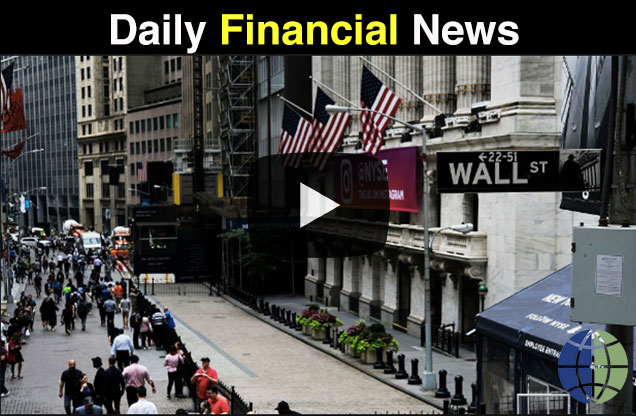What is a managed account? Should you use it?
There are many ways to invest in the financial markets; one is by using a managed account.
Think of it as a broker giving you financial freedom if you don’t have time or experience in trading.
Do you know managed accounts started in the 1970s?
This guide will discuss managed accounts and how you can sign up for a managed account.
What is a managed account?
A managed account is a brokerage account in which a group of assets is selected for an individual and a professional asset manager manages them.
Don’t get me wrong; the individual investor owns the account, but an asset manager manages it.
With a managed broker account, you agree to let the brokerage firm decide how to invest your money. The asset manager will trade on your behalf to grow your account.
It means you don’t have to do research and market analysis. The asset manager will do all the work.
Types of managed accounts
Now let’s go through the multiple types of managed accounts.
Individually managed account
It’s a separate account where your money manager trades on your behalf and follows all of your instructions, as the name suggests.
The manager’s trading decisions are influenced by your risk tolerance and the strategies you devise for them.
Most individual-managed accounts come with a minimum deposit of $10,000.
Pooled managed account
Pooled-managed accounts work in the same manner as mutual funds. The funds of several individual investors are pooled together into the same managed account.
Each investor in the pool may have a different portfolio, trading strategy, and comfort level with risk.
To decide which pool to join, you should look at how different funds have performed over the last several years.
The minimum deposit for pooled, managed accounts is around $2000. However, it depends on the broker.
PAMM managed account
It is a pool account involving money management by percentage allocation.
Here, the asset manager can look at the trading activities of several investors at the same time. PAMM accounts allocate the manager’s positions and profit/loss across several portfolios they manage.
It is called the “percent allocation money management module.” The risk is divided across the portfolios of all traders participating in the module.
LAMM managed account
LAMM accounts are the predecessors of PAMM accounts. They both work the same way, but there is one big difference: you choose the trade quantity based on the volume.
For example, if the asset manager buys one standard lot for any forex pair, each investor’s account will fall or rise by one standard lot.
Another way to look at LAMM is as a copy trading system. The trader who manages the LAMM account charges a fee to the investors.
The asset manager opens positions in the parent account, which are also in your sub-account.
MAM managed account
A MAM account, aka multi-account management, oversees multiple accounts. Here, you can tell the account manager he or she can increase each trade’s risk level and volume.
MAM accounts have some handy features. Positions are instantly opened on all sub-accounts. Investors can get full information on conducted trades and a comprehensive trade history.
They may also track commissions and the manager’s performance in real-time.
What to look for in a managed account?
Now that you know the different types of managed accounts, let’s move on to what to look for in a managed account.
There are a few things you need to consider:
Find a suitable broker
It is the most important aspect of a managed account. Recently, many shady brokers have popped up offering managed accounts. As a beginner, it’s important to find a reliable, regulated brokerage firm with good investing conditions.
Look for a good fund manager
You need to find an asset manager to start using a managed account. Choosing an asset manager should not be taken lightly.
You need to look at their overall profitability, years of experience, and how they perform trades.
Costs and fees
One of the most important things to consider is how much a managed account from a brokerage firm costs.
Most brokers charge a fee based on the amount of money you have invested. For example, if you have $10,000 invested in a managed account that costs 1% annually, you will pay $120 every year.
Peace of mind
Finally, the entire point of paying for account management is to get the peace of mind you need. If your broker is hesitant or the fund manager is not following your financial goals, it’s time to switch to another broker.
Pros of managed account
As a beginner, most people say, “Why do I trust my funds to other people?”
Good question!
There are a lot of reasons to open a managed account. Here are a few of them.
Hands off approach
The way to profit in the markets is to understand technical and economic indicators. It can take several years for a beginner to learn the ropes of these indicators.
As a result, managed forex accounts are suitable for beginners. Behind the scenes, your asset manager will do technical analysis and enter buy and sell orders as needed.
Don’t require too much time
A managed account is your best bet if you do not have enough time to monitor and trade the markets.
Beginner traders can’t afford to spend enough time keeping up with changes in the market, but success in the markets requires total commitment.
Managed accounts allow such folks to not dedicate much time and let the manager do all the work.
Keep emotions in check
Some traders, especially beginners, can’t keep their emotions in check. Such people are prone to clinging to positions that are clear losers. Others find forex trading fascinating and tend to overtrade, blowing the account super-fast.
If you have such qualities, you should leave your position in the hands of an account manager.
Final thoughts
Investing doesn’t have to be hard, and managed accounts are a great way to make trading less stressful.
Before choosing the broker and the manager for managed accounts, you should do proper research.


